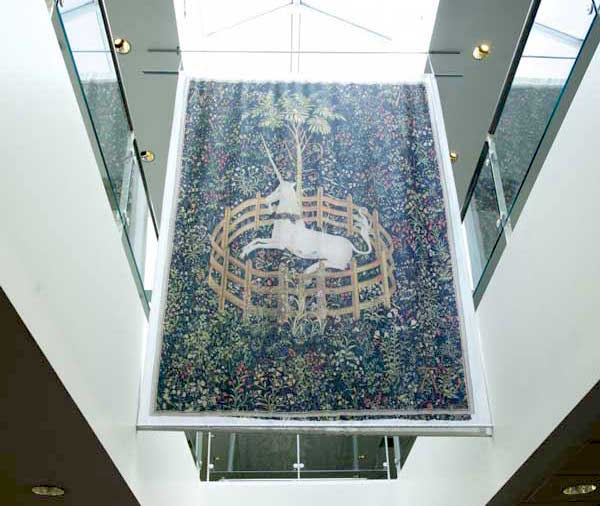The Chudnovsky Brothers
Distinguished Industry Professors in Mathematics
"The Mountains of Pi"
NEW YORKER, published March 2, 1992
The Chudnovsky brothers are astonishingly creative mathematicians, able to come up with recursive solutions to a variety of problems. I was privileged to work with them, and their insights and ideas opened up an array of possibilities to me as an electrical engineer."
- Ivan Selesnick, Associate Professor,
Electrical and Computer Engineering
The Chudnovskys, between them, have published a hundred and fifty-four papers and twelve books, mostly in collaboration with each other, and mostly on the subject of number theory or mathematical physics. They work together so closely that it is possible to argue that they are a single mathematician—anyway, it’s what they claim. The brothers lived in Kiev until 1977, when they left the Soviet Union and, accompanied by their parents, went to France. The family lived there for six months, then emigrated to the United States and settled in New York..."
Profile: Brothers Chudnovskyon PBS NOVA
The story of two brilliant mathematicians, a unicorn, and a homemade supercomputer
In these interview highlights, Gregory and David Chudnovsky, mathematicians at then Brooklyn Polytechnic University, ruminate on why math is considered hard, the beauty of mathematical equations, and why mathematicians like themselves rely on computers. Read more on PBS
Engineering is...
Art
The unicorn tapestry is hanging in Dibner Library because in 2003 the brothers helped the Metropolitan Museum of Art put together a flawless multi-gigabyte image of "Unicorn in Captivity," whose 500-year-old fibers had shifted while being cleaned. It took a vector displacement map (with some 15,000 arrows), a set of equations to optimize the position of all 240 million pixels in the image, and some 300 million operations per pixel to digitally “weave” the fibers back together. Finally, after four months of work, the Chudnovskys entered the final data into the system, and after 30 hours of continuous running, their supercomputer had successfully performed the 7.7 quadrillion calculations needed to produce the image for the Met.

Math
The brothers once held the record for calculating the digits of pi—to more than 4 billion places.
Supercomputers
The floor of the Chudnovskys’ Institute for Mathematics and Advanced Supercomputing (IMAS) features a large digital image showing more than 100 different identities, many discovered by the Chudnovskys themselves.
Geometry
The floor also features a large reproduction of Albrecht Dürer's Melencolia I, a 1514 engraving that depicts a winged being holding a caliper and surrounded by various other tools associated with geometry. (The figure’s dejected mien, Gregory Chudnovsky has quipped, is one often seen on mathematicians trying to solve seemingly unsolvable problems.)
Global
The Chudnovskys and their parents, Soviet Jews, had been allowed to leave Russia only after years of pressure from the international science and math community.
Discovery
Looking at the challenge of pi as a philosophical undertaking, the Brothers were once quoted saying "We are looking for the appearance of some rules that will distinguish the digits of pi from other numbers. If you see a Russian sentence that extends for a whole page, with hardly a comma, it is definitely Tolstoy. If someone gave you a million digits somewhere in pi, could you tell it was pi? We don’t look for patterns; we look for rules.”
Universe
Another of their interesting projects has been a complex computer simulation they call "Galaxy in a Box," meant to simulate the evolution of stars within a galaxy.
Presentations
- Computer Vision, Convolutions, Complexity and Algebraic Geometry
- 2D Tiling: Domino, Tetromino and Percolation
- Graph Embedding and "Squaring the Circle"
- Graph Embeddings
- Challenges of in-circuit functional timing testing of System-on-a-Chip
- Dominoes and Tetrominoes Tiling for Particular Domains
- Sparse Sets in Time and Frequency with Diophantine Problems and Integrable Systems
- Calculations in the Era of Contemporary Computing
- On Fourier Matrices, Szego Problem, Prolate Functions and Painleve
- Near Graph Isomorphisms
More Articles
"Melancolia and Magic Squares"
CABLE article, published Spring 2014
“You use number theory every day, even if you don’t realize it,” David Chudnovsky says. “A cell phone requires number theory and algorithms. So does the television. It’s all mathematics in the form of digital signal processing.”
Mathematics, the Chudnovskys enthusiastically declare, is a universal language required not just for computing but almost everything. “If you know math, you can do absolutely anything,” they both assert.
"After 500 Years, Dürer's Art Still Engraved on Mathematicians' Minds"
LIVE SCIENCE, The Chudnovsky's Op-Ed
Albrecht Dürer's Melencolia I, one of his three "Master Prints," widely considered the pinnacle of classical printmaking. Dürer, a Renaissance man, incorporated his world view and his deep interest in science, especially mathematics , into his prints. Among the prints, "Melencolia I" holds a special place, influencing many generations of artists, philosophers, scientists, mathematicians and students of science.
The image of Melancholy, a winged genius with a large book on her lap and an open pair of dividers in her hand, is widely interpreted as a personification of secular learning, with mathematics as a foundation of the natural sciences. This figure, which occupies most of the print, might be an allusion to the ancient problem of expressing the number pi in algebraic form. In 1882, it was proved that such an expression would be impossible.

